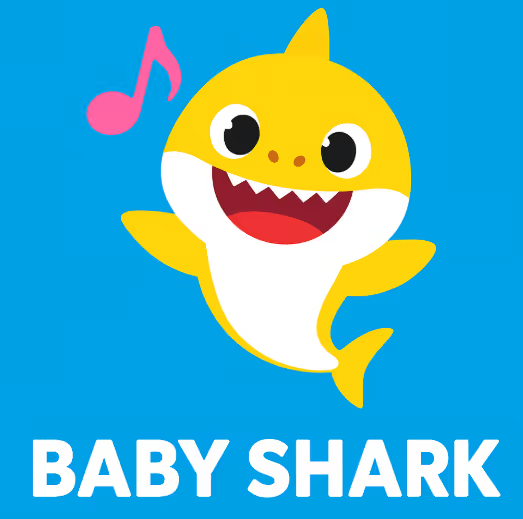Stay informed with our newsletter.
.webp)

.webp)

Baby Shark’s rise from a simple 90-second children’s video to a $400 million global phenomenon showcases the power of viral content and strategic brand expansion. What began as a catchy, animated clip quickly became a cultural sensation, driving massive viewership, merchandise sales, live shows, and worldwide recognition. Its success highlights how engaging storytelling, memorable music, and smart marketing can transform a small piece of content into one of the most profitable kids’ franchises of all time.

When Kim Min-seok approved the release of a short children’s song video in June 2016, he had no idea he was about to spark a global craze. That tiny clip went on to dominate the internet, racking up more than 16 billion views and becoming the most-watched YouTube video in history.
The tune, of course, was the unbelievably catchy Baby Shark.
What started as a fun kids’ song ended up captivating toddlers, haunting adults, and ultimately transforming its creator, Pinkfong, into a media powerhouse worth hundreds of millions. “We never imagined it would shine brighter than our other content,” said Mr Kim, Pinkfong’s CEO, in a conversation with the BBC from the company’s Seoul headquarters.
“But looking back, it became the turning point that launched our global expansion.” That milestone became even more significant on Tuesday, when Pinkfong made its debut on the South Korean stock exchange, its shares jumping over 9% and its valuation crossing $400 million.
Launched in 2010 as SmartStudy, the company originally focused on creating digital content for kids up to age 12. The startup began with only three people, Mr Kim, CTO Dongwoo Son, and one more teammate.
“The office was tiny, much smaller than this,” Mr Kim recalled, gesturing around the conference room where he was speaking. It was so small and early-stage that “we didn’t even expect to earn a salary then,” he said through a translator.
Pinkfong eventually pivoted, narrowing its target audience to toddlers. The team grew to about 100 employees and shifted toward simple, educational games and videos. “And that’s when Baby Shark appeared,” Mr Kim added. By 2022, the company officially rebranded as The Pinkfong Company, taking inspiration from an energetic, pink fox that starred in one of its early animations.
Today, the firm employs around 340 people and operates offices in Tokyo, Shanghai, and Los Angeles.
The origins of Baby Shark trace back to the US in the 1970s, where it was a familiar tune at children’s summer camps. Its famous line, “Baby shark, doo, doo, doo, doo, doo, doo, is irresistibly fun for kids and mildly torturous for adults, noted media analyst Kevin Chew from Nanyang Technological University.
Mr Kim is fully aware of its infectious nature. “It’s basically a K-pop track, fast, rhythmic, and seriously addictive,” he said. He explained that its chant-like structure makes it easy for young children to latch onto. The song exploded in popularity once its dance routine began appearing at kids’ events across Southeast Asia.
Soon, videos of families and children dancing to the song were circulating widely online, and the clip skyrocketed into viral territory. Within Pinkfong’s office, the team watched the view count climb with excitement, “it felt like a festival,” Mr Kim said.
By November 2020, Baby Shark officially became YouTube’s most-viewed video. For several years after its release, it accounted for roughly half of Pinkfong’s total revenue and became the launchpad for a wave of new products, content, and merchandise.
For questions or comments write to contactus@bostonbrandmedia.com
Source: BBC
